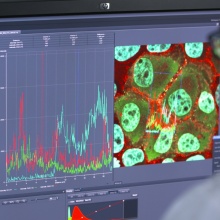Our technology platforms
Central facility for microscopy and cell sorting, cutting-edge high-end microscopy and comprehensive support for imaging analysis
The technology platform “Systems Transcriptomics” provides access to state-of-the art methods in the analysis of gene regulation


